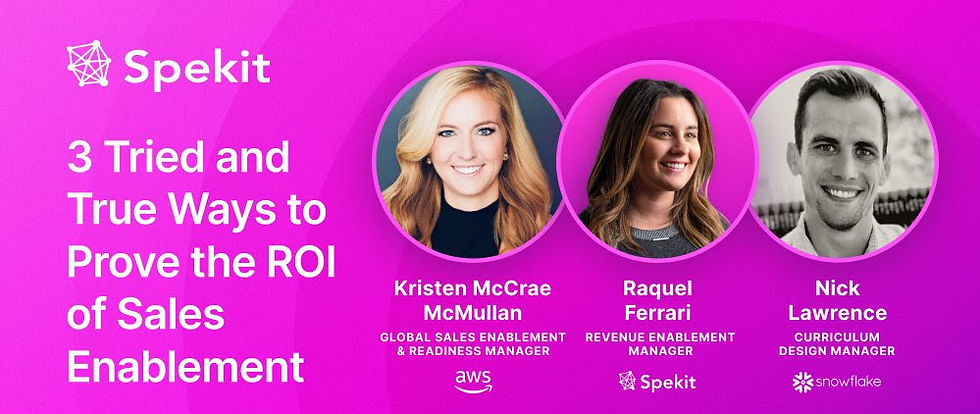Stakeholder Sentiment Analysis
- Whitney Sieck, CPTD

- Oct 4, 2023
- 2 min read

When you evaluate your enablement strategy or program, it's also critical to assess your stakeholder sentiment so you know how to navigate the relationships. This is a very common practice for consultants and I view the enablement team as internal consultants to the revenue organization.
You should know if someone is a champion, detractor or neutral party.
CHAMPION
A person who enthusiastically supports, defends or advocates for your work. They typically are part of owning the process and have a stake in the final decision, though they likely don’t have the authority to act by themselves. They are an influencer in a positive way to promote and reinforce enablement efforts. They are part of the solution!
NEUTRAL/UNKNOWN
A person who is often asked to engage with your work but neither champions nor detracts from your work (or does both). They could just be the type who disagrees and commits or they could be disengaged or truly just a mystery to you on how they feel about you, your work and the enablement function.
DETRACTOR
A person who is a blocker for progress or openly disagrees with your approach, deliverables, or outcomes. They do not adopt or reinforce the enablement programming and they typically have a negative multiplier effect. They are part of the problem but do not offer reasonable solutions.
Understanding their current sentiment is one thing, but it becomes more powerful when you assess alongside their sphere of influence. This helps you prioritize which relationships are most critical to your programs' success. The categories here can be as simple as high, medium, and low.
HIGH SPAN OF INFLUENCE
Influence multiple levels of an organization (deep; ie. manager of managers) or highly collaborative cross-functional partner across multiple lines of business (wide, i.e. company wide initiatives like L&D)
MEDIUM SPAN OF INFLUENCE
Influence multiple people but not necesarily deep or wide (ex: front line manager influences their direct team and their direct peers but not outside departments or their peers teams)
LOW SPAN OF INFLUENCE
Influence contained to small circle of themselves and close peers (typically an IC, but not always)
I've created a simplistic template to help you assess the current map of your team's internal stakeholders. (Link to template here.) When filling it out be hyper critical of your engagements in order to gain the most value from the assessment.
Best of luck in turning challengers into champions!



Comments